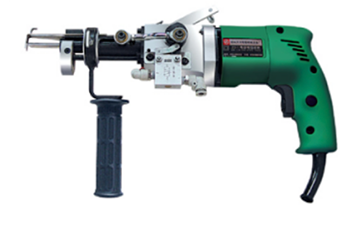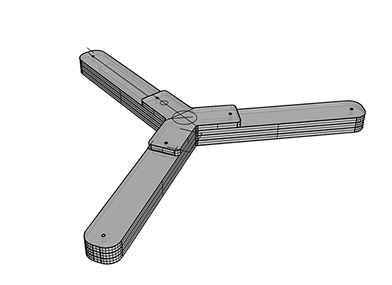Oscar Velázquez

WEEK 11 / Apr 05
Machine design
Group assignment
- make a machine, including the end effector
- build the passive parts and operate it manually
- document the group project and your individual contribution
Behold, the amazing idea of machine that the Fab Lab Puebla will develop:
The CNC tufting machine!
Tired of your plain carpets? Do you wants to add some groove the them?
Then the CNC tufting.
We wanted to do this machine as a challenge, we think that it wasn´t really complex and that can be done to obtain great results in diferent fabrics.
%20200408.jpg?crc=3860566953)
MACHINE DEIGN
%20201342.jpg?crc=4188121730)
Example of the power belt that we are going to use for the x and y movement
%20201956.jpg?crc=4105235287)
Example of the power belt that we are going to use for the x and y movement
Our work zone will hold this measurements:
The measurements for the mechanisms in each axis are as listed:
• The Z axis will use a worm gear measuring 150mm long.
• The X axis will use a Belt and will measure 300 mm long.
• The Y axis will use a Belt and measure 450 mm long.
%20203347.jpg?crc=298348785)
That was the design plan. But then we found some old structure abandonned in our Fablab. The structure was made of aluminum T profiles. Which is a sturdy way to support a machine. We understand that these profiles are not good for prototyping because they are expensive but we found them without an use and we thought that was a good idea to recycle them, we reuse something and at the same time we create a much more sturdier machine.
%20204256.jpg?crc=3796842375)
Other modification to the original structure was, obviously, the work zone. The work zone was a simple mdf square measuring 25 cm per side. We designed a frame to tense the fabric. The frame was composed by some L shape pieces that gives us the height. We stacked two pieces with a 5mm thickness to have a 10mm thicknes per side. then we put the main face of the frame which had some holes to put screws in them. We know that this is not the best way to tense and frame the fabric. The screws gives us good tension but the mounting and removal of the fabric is slow and complex. We are working in a second porotype for the frame with out screws and with a put and remove design.
%20205355.jpg?crc=3951731513)
The unions for the aluminum T profules were 3D printed. The machine uses 3 different unions. One type of union to work as vertexes for the aluminum T profiles, as displayed in the picture. Other type to balance the tool and join it to the middle profile, this union holds together the x acis and the side bars of the structure. And the 3 type of union holds the y axis and the guide pipes of the y axis. All of these unions are 3D printed.
%20210126.jpg?crc=3765325166)
ELECTRONICS DESIGN
%20211622.jpg?crc=274178501)
DESIGN TOOL
One of the real challenge of this machine was the tool. Every CNC machine works the same, it is the tool that defines this machine. In our case it was the tufting tool. This tool must move up and down at a certain speed in order to penetrate the fabric just as fast enough to put the thread and not shred the fabric. This speed also must be coordinated with the X axis movement.
First we design a model in the software Solid Works. We used this software because it's really professional for creating ensembles, and it also has a lot of simulation modules so we can make it work to test the up and down movement before we manufacture it. It is also easier to use than other professional softwares like Catia.
%20213851.jpg?crc=3910360664)
The gears were added to the design so we can slow down the spin speed of the DC motor. Our motors spins so fast that the needle and the fabric may break. We calculated our gears to slow down the motor and gives us the necessary speed to tuft the fabric.
%20215058.jpg?crc=471983364)
The elements were cut in the laser cutter. Someof the elements needed more thickness than the one provided by our material. 3mm MDF, so we cut multiple times that element and glued them together to gain the thickness that we were looking for. For the metal profiles we used some aluminum pipes that we have in our waste basket and we used the lathe to gave them the 1/8 rope.

And this is hand tufting:
In the picture above we can see one member of our team. Securing the tool and x axis to the main structure.
%20210417.jpg?crc=4185594213)
%20215637.jpg?crc=4045665575)
For our machine we are going to use movement in three different axis. For the X and y axis movement we are going to use belts. For the z movement we are going to use an worm gear.
Example of the worm gear that we are going to use for the movement in the z axis.
The worm gear we are going to use is a single threaded. The pass is 1mm, so the advance is also 1mm because is single threaded.
The advance measurements for the X and y axis Belt will be the same.
%20195901.jpg?crc=379532128)
This is a demostration video of hand tufting:
Some of the modifications we made to the structure were the heigh in which the tool was ubicated. In the original structure was too low.. We needed at least 23 cm iso we can put the needle in the correct angle. In order to correct that detail we scavenged another larger T profile and replace the middle vertical bars. The we posioned the tool with x axis on top of the new T profiles.
The scavenged T profile was cut with a metal blade.
The fabric must be really tense and it must have a large grid. This means that the space between every thread must be big. If the space is too small, the tufting needle will rip the fabric apart.
In the picture above we have the stepper motor and the worm that works as our y axis. In the original structure that we decided to recycle this axis was a little bit bended up. This bend cause that theis axis didn't work correctly and the movement got stucked. We traced back the problem and we found out that the union thaat holds the other extreme of the worm wasnt secure with screws, instead the original designer fixated it with double side mountage tape. This cause that the union got a little bit hhigher than the motor. We secure the union with screws to solve that problem.
The Cam serves the purpose of transforming the rotational movement generated by the DC motor into a linear movement. The function is explained in the picture. The axis rotates, rotating the cam, every turn of the dc motor the cam will push down the follower which in this case is the needle for the tufting
Once our design was ready we decided to prototype it using our laser cutter. This was the fastest option and the more precise for the gears, the cam and other elements. The needle was manufactured in a diferent way using our lathe.
%20195115.jpg?crc=4009001192)
%20211812.jpg?crc=4165419125)
%20211825.jpg?crc=414157628)
%20215644.jpg?crc=428611125)
This is a hand tufting gun:
%20200601.jpg?crc=4176981242)

%20201704.jpg?crc=370127208)
%20203845.jpg?crc=4233413391)
%20204833.jpg?crc=508557776)
%20205813.jpg?crc=3885145839)
%20211936.jpg?crc=499195473)
%20215356.jpg?crc=4163818336)
%20215659.jpg?crc=4129823291)

%20202548.jpg?crc=4100785288)
%20212930.jpg?crc=3984110060)
%20214425.jpg?crc=118209924)